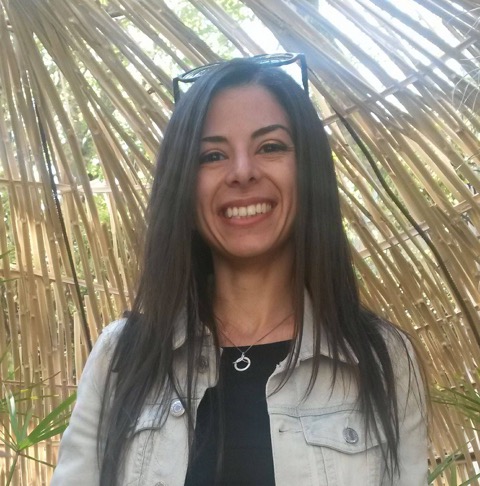Centre Méditerranéen de Médecine Moléculaire, Inserm U1065, Université de Nice Sophia-Antipolis, Nice, France From benchmarking HITS-CLIP peak detection programs to a new method for identification of miRNA-binding sites from Ago2-CLIP dataNucleic Acids Res. 2017 May 19;45(9):e71. doi: 10.1093/nar/gkx007. Silvia Bottini, Nedra Hamouda-Tekaya, Bogdan Tanasa, Laure-Emmanuelle Zaragosi, Valerie Grandjean, Emanuela Repetto and Michele Trabucchi
Cv
Silvia Bottini, 31 ans, développe des approches informatiques pour étudier le réseau d'interaction ARN-protéine à la fois avec des systèmes in vitro et in vivo. Elle a obtenu un doctorat en bioinformatique à l'Université de Sienne (Italie) dans le laboratoire de Génomique de Novartis Vaccines Company dirigé par les Dr Claudio Donati et Alessandro Muzzi. Elle y a développé un pipeline informatique, appelé PIPE-chipSAD, pour des études de transcriptome chez les bactéries. Depuis octobre 2014, elle effectue un post-doctorat dans l'équipe du Dr Michele Trabucchi au Centre Méditerranéen de Médecine Moléculaire (Inserm U1065) à Nice pour étudier les mécanismes moléculaires de l'expression des gènes régulés par les micro-ARN (miRNA). Ses travaux ont permis le développement d'une nouvelle méthode d’identification des sites canoniques et non canoniques de liaison aux miRNA basée sur la découverte de nouveaux motifs par l’approche Ago2 CLIP-seq. Cette méthode donne une image plus globale du rôle joué par les miRNA dans les cellules et peut être utilisée dans les biopsies humaines où les approches classiques ne sont pas applicables.
Contact
Cette adresse e-mail est protégée contre les robots spammeurs. Vous devez activer le JavaScript pour la visualiser.
Control of Gene Expression
INSERM U1065, C3M
University of Nice Sophia-Antipolis
151, route de St-Antoine-de-Ginestière
B.P. 2 3194
06204 - NICE CEDEX 3
Phone +33-489-0642-56
Fax +33-489-0642-60
Résumé de l'article
Experimental evidence indicates that about 60% of miRNA-binding activity does not follow the canonical rule about the seed matching between miRNA and target mRNAs, but rather a non-canonical miRNA targeting activity outside the seed or with a seed-like motifs. Here, we propose a new unbiased method to identify canonical and non-canonical miRNA-binding sites from peaks identified by Ago2 Cross-Linked ImmunoPrecipitation associated to high-throughput sequencing (CLIP-seq). Since the quality of peaks is of pivotal importance for the final output of the proposed method, we provide a comprehensive benchmarking of four peak detection programs, namely CIMS, PIPE-CLIP, Piranha and Pyicoclip, on four publicly available Ago2-HITS-CLIP datasets and one unpublished in-house Ago2-dataset in stem cells. We measured the sensitivity, the specificity and the position accuracy toward miRNA binding sites identification, and the agreement with TargetScan. Secondly, we developed a new pipeline, called miRBShunter, to identify canonical and non-canonical miRNA-binding sites based on de novo motif identification from Ago2 peaks and prediction of miRNA::RNA heteroduplexes. miRBShunter was tested and experimentally validated on the in-house Ago2-dataset and on an Ago2-PAR-CLIP dataset in human stem cells. Overall, we provide guidelines to choose a suitable peak detection program and a new method for miRNA-target identification.




